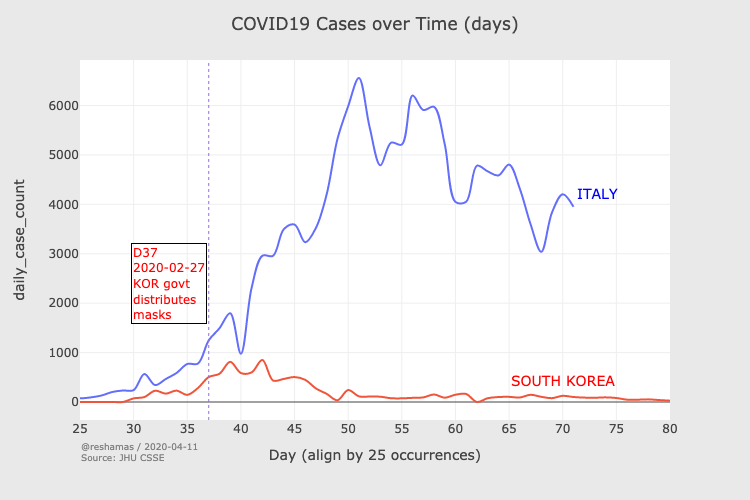We& #39;ve just completed a 19-author analysis of the effectiveness of mask wearing, with 84 references. To explain what the science shows, I teamed up with the wonderful Prof @trishgreenhalgh CBE, who just led a British Medical Journal study on this. (thread) https://www.fast.ai/2020/04/13/masks-summary/">https://www.fast.ai/2020/04/1...
Our team& #39;s review of the literature found substantial evidence in favor of widespread mask use to reduce community transmission, based on droplet dynamics, mask material analysis, efficacy studies, and behavioral studies. Here& #39;s our paper: http://up.fm/masks ">https://up.fm/masks&quo...
The key insight is that most discussions assume that the purpose of the mask is to protect the wearer, since this is what all doctors learn about in medical school. But actually masks work *far* better at blocking the infection at the source. This is called "source control"
The reason: when you speak, micro-droplets are ejected. If you’re infectious, they contain virus particles. Only the largest droplets end up surviving more than 0.1 s before drying out and turning into nuclei that are 3-5 times smaller. They are hard to filter at that point!
People are most infectious in the early days of infection, when they have few or no symptoms. Since we need to filter at the source, that means everyone has to wear a mask, to protect those around them. Here& #39;s video showing a mask blocking speech droplets. https://zenodo.org/record/3732625#.XpB3NNNKg1g">https://zenodo.org/record/37...
Even ignoring source control, as @trishgreenhalgh et al point out in BMJ, the precautionary principal means that we we should wear masks, on the grounds that we have little to lose and potentially something to gain from this measure https://www.bmj.com/content/369/bmj.m1435">https://www.bmj.com/content/3...
Although imperfect, we now have a lot of data showing the effectiveness of masks. Some of the best data comes when comparing before and after a country changes it& #39;s policy. For instance, S Korea only acquired masks for its citizens in late Feb. Before that there was a shortage
During the mask shortage, S Korea looked to be on a similar trajectory to Italy, but after it everything turned around. We see the same thing in every region that has introduced widespread mask use, and there are no examples of poorer outcomes after universal masking.
Some claim that making people wear masks encourages risky behavior. Similar arguments have been made about condoms, motorbike helmets, etc. Real-world results show that at a population level there is an overall improvement in safety from these kinds of measures.
You can make one at home, from a t-shirt, handkerchief, or paper towel, or even just use a scarf or bandana. There& #39;s no evidence that your mask needs to be made with any particular expertise to be effective for source control. You can put a cloth mask in the laundry and reuse it
Here& #39;s an illustrative video demonstrating how simple cloth or paper towel masks work for source control. https://youtu.be/F0RcH9DfuyE ">https://youtu.be/F0RcH9Dfu...
For more, including how to make a mask, see http://Masks4All.co"> http://Masks4All.co
Huge thanks to co-authors @arimoin @fquestie @larrychu @zeynep @lexfridman @austinvhuang @hernandez_danny @arnedelft @HeleneMarivdW @AmyPricePhD @reshamas Zhiyuan Li, Christina Ramirez, Lei-Han Tang, Vladimir Zdimal, Christina Bax, Gregory Watson, and Viola Tang
If you& #39;re in the US and want to send a letter to your governor demanding a mask mandate, text & #39;masks4all& #39; to 50409 and follow the prompts.
#Masks4All
#Masks4All
Special thanks to @covid19group from @hkbaptistu for working on the modeling for this paper.

 Read on Twitter
Read on Twitter


